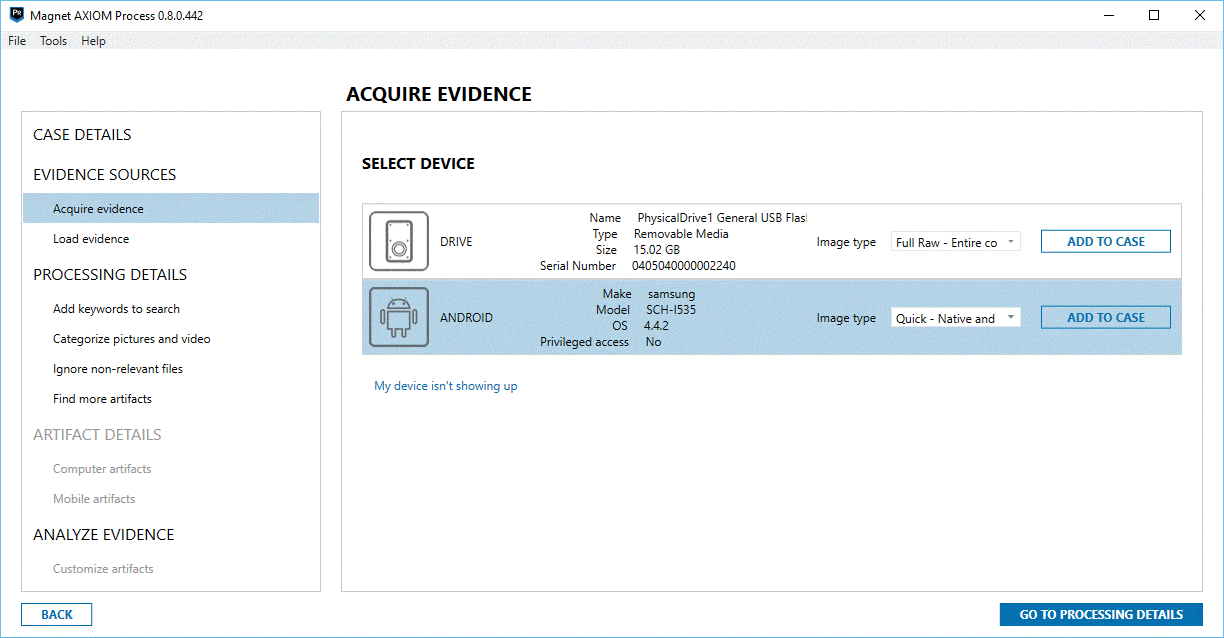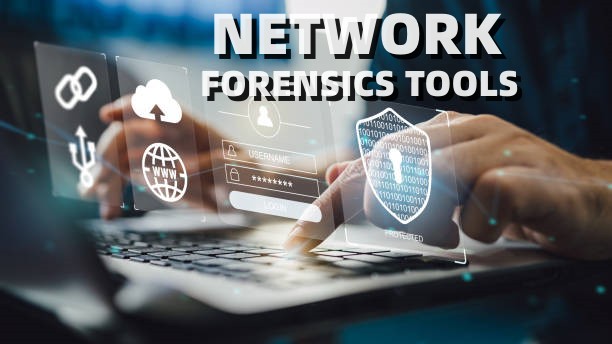Forensic image processing tools help analyze and enhance digital images for legal investigations. They play a crucial role in solving crimes.
Digital forensics relies heavily on forensic image processing tools. These tools enhance, analyze, and authenticate visual evidence. They assist law enforcement agencies in identifying suspects, reconstructing crime scenes, and verifying the authenticity of digital evidence. Popular tools include Adobe Photoshop, Amped FIVE, and Forensic Toolkit (FTK).
Each tool offers unique features such as noise reduction, image sharpening, and metadata analysis. Effective use of these tools requires specialized training and expertise. Properly processed images can provide compelling evidence in courts, making these tools indispensable in modern forensic investigations. They streamline the process, ensuring accuracy and reliability in legal proceedings.

Credit: www.magnetforensics.com
The Role Of Image Processing In Forensics
Forensic image processing tools play a vital role in modern investigations. These tools help uncover details that are often invisible to the naked eye. The processed images can be crucial evidence in solving crimes. Let’s explore how image processing aids forensic investigations.
Capturing The Scene
Accurate scene capture is the first step in forensic investigations. High-quality images ensure no detail is missed.
- Photographic Documentation: Crime scenes are photographed from various angles.
- Video Recording: Continuous video captures the scene’s dynamic elements.
- 3D Scanning: 3D scanners provide a complete view of the crime scene.
These methods help preserve the scene for further analysis. The images and videos serve as a reference throughout the investigation.
Revealing Hidden Details
Image processing helps reveal details that are not immediately visible.
- Enhancement: Adjusting brightness and contrast to highlight important features.
- Filtering: Using filters to remove noise and clarify the image.
- Zooming: Magnifying specific areas to examine finer details.
- Pattern Recognition: Identifying patterns, such as fingerprints or facial features.
These techniques help investigators find critical evidence. Enhanced images can reveal hidden clues, aiding in solving the case.
Key Features Of Forensic Image Tools
Forensic image processing tools are essential in crime investigations. They help in enhancing, analyzing, and interpreting images. These tools offer various features that assist forensic experts in their work.
Resolution Enhancement
Resolution enhancement improves the clarity of images. It makes details visible that are not clear. Enhanced images help in identifying suspects and objects.
Some key techniques include:
- Super-resolution
- Interpolation methods
- Edge detection
| Technique | Description |
|---|---|
| Super-resolution | Combines multiple images for a clearer result |
| Interpolation methods | Estimates new pixel values |
| Edge detection | Highlights image boundaries |
Noise Reduction
Noise reduction removes unwanted elements from images. It makes the images clearer and more useful. Forensic experts use clean images for better analysis.
Common noise reduction techniques include:
- Gaussian blur
- Median filtering
- Wavelet transform
Noise reduction ensures that key details are not lost.
Color Adjustment
Color adjustment corrects and enhances colors in images. Proper color can reveal hidden details. Adjusted colors help in better analysis and interpretation.
Tools for color adjustment include:
- Brightness and contrast control
- Histogram equalization
- Color balance
Accurate colors can be crucial in forensic investigations.
Popular Forensic Image Processing Software
Forensic image processing tools are vital for solving crimes. They help experts enhance and analyze images. Below are some popular tools used in forensic investigations.
Photoshop For Forensics
Adobe Photoshop is widely known for its powerful image editing features. It is also used in forensics to enhance and analyze images. Experts can use tools like sharpening, contrast adjustment, and noise reduction to reveal hidden details. Layering helps in comparing different versions of an image. Photoshop is versatile and supports various file formats.
Gimp With Forensic Extensions
GIMP (GNU Image Manipulation Program) is a free, open-source image editor. With forensic extensions, it becomes a powerful tool for forensic analysis. Extensions like GIMP-ML add machine learning capabilities. This helps in automatic image enhancement. GIMP supports plugins for tasks like metadata extraction and image comparison. Being open-source, it is highly customizable.
Forensic Image Analyzer
Forensic Image Analyzer is a specialized tool for forensic investigations. It offers features like image authentication, object detection, and pattern recognition. The software can identify tampered areas in an image. Forensic Image Analyzer supports various image formats and provides detailed reports. It is designed to meet the needs of forensic experts.

Credit: www.salvationdata.com
Techniques In Image Authentication
Forensic image processing tools are crucial in digital investigations. They help determine the authenticity of images. Different techniques help experts verify if an image is genuine. These techniques can reveal hidden details and alterations. Let’s explore some of these methods.
Metadata Analysis
Metadata analysis is one of the primary techniques. Metadata contains important information about the image. This includes the date, time, and device used to capture the image.
- Camera model
- Geolocation data
- Software used for editing
Experts examine this data to find inconsistencies. For example, if a photo claims to be taken in 2022, but the metadata shows 2019, this raises questions. Similarly, if an image edited in Photoshop, the metadata will indicate it. By studying these details, experts can verify the image’s authenticity.
Error Level Analysis
Error Level Analysis (ELA) is another effective technique. This method detects changes in image compression. When an image saves or edits, it compresses differently.
ELA highlights these compression differences. By comparing the error levels, experts can find edited parts. Original parts of an image will show consistent error levels. Edited parts will show different levels, indicating tampering.
- Original image analysis
- Compression error detection
- Highlighting edited areas
Tools like Forensically and ImageMagick use ELA for image authentication. They provide visual maps of error levels, making it easier to spot changes.
Handling Image Tampering
Handling image tampering is crucial in forensic investigations. Experts use forensic image processing tools to detect and recover tampered images. These tools help ensure the authenticity of digital evidence. Below are key methods and techniques for handling image tampering.
Detection Methods
Detecting image tampering involves several advanced techniques. Here are some common methods:
- Metadata Analysis: Examines hidden data within the image file.
- Pixel-Level Analysis: Identifies inconsistencies in pixel patterns.
- Statistical Analysis: Uses algorithms to detect anomalies.
- Clone Detection: Finds duplicated regions within an image.
Recovery Techniques
Once tampering is detected, recovery techniques help restore the image. Here are some effective methods:
- Noise Pattern Analysis: Removes noise to reveal original details.
- Image Inpainting: Fills in missing or altered parts of the image.
- Histogram Equalization: Improves the contrast for better clarity.
- Fourier Transform: Analyzes image frequency to identify manipulations.
| Method | Description |
|---|---|
| Metadata Analysis | Examines hidden data within the image file. |
| Pixel-Level Analysis | Identifies inconsistencies in pixel patterns. |
| Noise Pattern Analysis | Removes noise to reveal original details. |
| Image Inpainting | Fills in missing or altered parts of the image. |
Using these tools and techniques ensures accurate forensic analysis. This helps maintain the integrity of digital evidence.
Case Studies: Successes Of Image Processing
Forensic image processing tools have revolutionized crime-solving techniques. They help uncover hidden evidence, revealing crucial details in investigations. Let’s explore some success stories in this field.
Solving Crimes
Forensic image processing has solved numerous crimes. One famous example is the Boston Marathon bombing. Investigators used image processing tools to analyze surveillance footage. They identified the suspects swiftly, leading to their capture.
| Case | Tool Used | Outcome |
|---|---|---|
| Boston Marathon Bombing | Surveillance Footage Analysis | Suspects Identified and Captured |
| Kidnapping Case | Facial Recognition Software | Victim Rescued |
In another case, facial recognition software helped solve a kidnapping. Authorities analyzed photos and matched them with a suspect’s profile. This led to the rescue of the victim.
Uncovering Evidence
Image processing tools also uncover hidden evidence. They reveal details not visible to the naked eye. An example is the enhancement of blurry images.
- Enhancing Blurry Photos
- Restoring Damaged Evidence
- Revealing Hidden Details
In one case, a blurry photo of a suspect was enhanced. This provided a clearer image, leading to their arrest. Another instance involved restoring damaged evidence. Image processing tools reconstructed the evidence, revealing crucial details.
Forensic image processing tools have transformed crime investigations. They solve crimes faster and uncover hidden evidence effectively.
Challenges In Forensic Imaging
Forensic imaging is a critical part of criminal investigations. It involves capturing and analyzing images for evidence. Despite its importance, several challenges complicate the process. These challenges can hinder the accuracy and effectiveness of forensic investigations.
Dealing With Low-quality Images
One significant challenge in forensic imaging is dealing with low-quality images. These images are often grainy, blurry, or poorly lit. Such images can make it difficult to identify crucial details.
- Noise Reduction: Low-quality images often have a lot of noise. Noise reduction techniques are essential to enhance image clarity.
- Resolution Enhancement: Poor resolution can obscure important details. Techniques to enhance resolution can help reveal hidden evidence.
- Color Correction: Incorrect color balance can mislead analysis. Color correction tools adjust the colors to their true form.
Forensic experts use advanced tools to improve image quality. These tools can significantly enhance the clarity of low-quality images.
Legal And Ethical Considerations
Legal and ethical considerations are paramount in forensic imaging. The integrity of the images must be maintained to ensure they are admissible in court.
| Consideration | Details |
|---|---|
| Image Integrity | Maintaining the original quality and authenticity of the image. |
| Chain of Custody | Documenting the handling of the image from capture to presentation. |
| Consent | Ensuring legal permission is obtained for image capture and use. |
Forensic experts must adhere to strict protocols. These protocols ensure the images remain uncontaminated and legally sound.
Ethical considerations also play a crucial role. Experts must ensure that image processing does not alter the factual content. This maintains the integrity of the evidence presented in court.

Credit: nasbench.medium.com
Future Trends In Forensic Image Processing
The future of forensic image processing is rapidly evolving. Cutting-edge technologies are pushing the boundaries of what is possible. These advancements are transforming the field, making it more efficient and accurate.
Artificial Intelligence
Artificial Intelligence (AI) is revolutionizing forensic image processing. AI algorithms can quickly analyze large datasets. This helps in identifying patterns and anomalies.
Machine learning models can enhance image quality. They can remove noise and improve clarity. AI can also aid in facial recognition and object detection.
Deep learning techniques are particularly effective. They can process complex images with high accuracy. This reduces the time needed for manual analysis.
| AI Application | Benefits |
|---|---|
| Image Enhancement | Improves clarity and detail |
Frequently Asked Questions
What Is The Imaging Tool We Are Using In Forensics?
The imaging tool used in forensics is typically EnCase. It helps in acquiring, analyzing, and reporting digital evidence.
What Is The Tool For Digital Forensic Of Images?
The tool for digital forensic analysis of images is EnCase. It helps in examining and recovering digital evidence.
What Are 3 Types Of Tools Used By Digital Forensic Examiners?
Digital forensic examiners use three main types of tools: disk imaging software, file recovery tools, and network analysis tools. Disk imaging software creates exact copies of hard drives. File recovery tools retrieve deleted files. Network analysis tools monitor and analyze network traffic.
What Is The Difference Between Ftk And Ftk Imager?
FTK is a comprehensive forensic toolkit for investigations. FTK Imager is a tool for creating forensic images.
Conclusion
Forensic image processing tools revolutionize crime-solving by enhancing evidence analysis. They improve accuracy, speed, and reliability. Investing in these tools supports better justice outcomes. Stay updated with the latest advancements in forensic technology. Embrace these tools to strengthen investigative processes and ensure thorough, precise results for law enforcement agencies and forensic experts.


